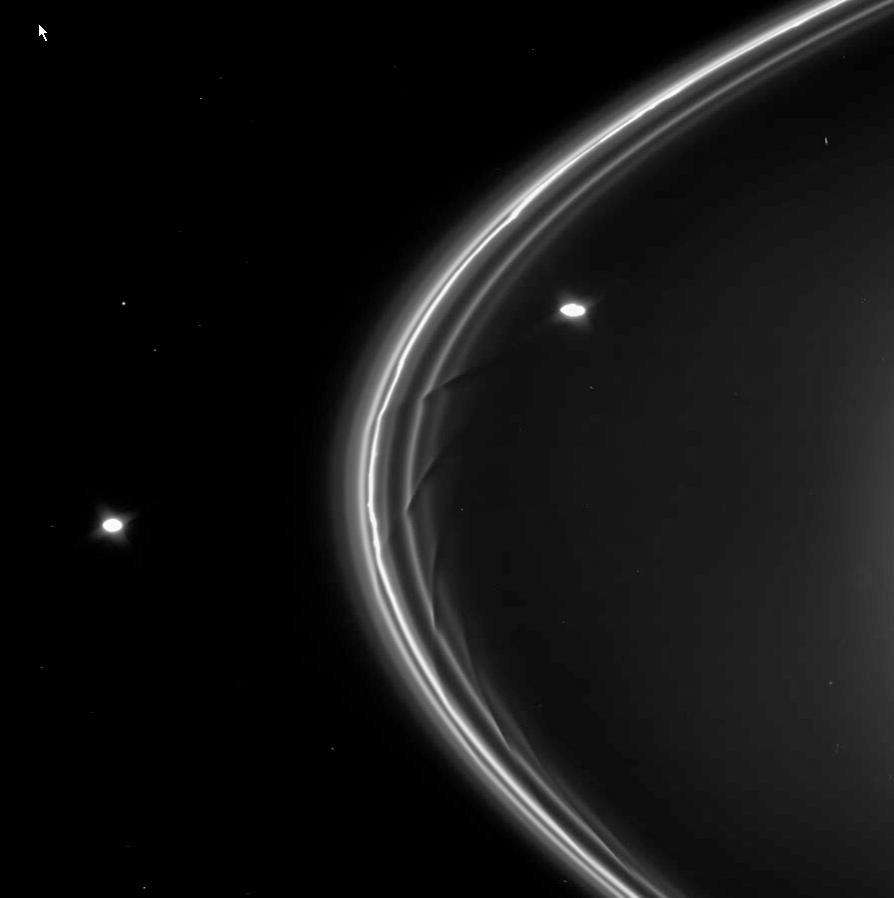
Saturn’s F ring and two shepherd satellites (inner Prometheus and outer Pandora) seen by Cassini spacecraft. Saturn is to the right of the image. (Image credit: NASA/JPL/Space Science Institute)
The origin of “shepherd moons” in planetary rings such as those found on Saturn and Uranus may be a natural consequence of ring evolution around giant planets. Studying the two shepherd moons in Saturn’s F ring system, Prometheus and Pandora, researchers has found how these moons may form.
Using computer simulated collisions between icy moonlets the researchers found that the moonlets disintegrate in the collision, leaving a ring of icy debris, similar to what it is believe the F ring system is made of. However, if the moonlets have denser cores, they may only partially disintegrate, leaving behind two moons, matching observations made in the F ring system.
An accompanying News & Views article says that a similar process may explain features of the Uranian and Neptunian ring systems.
Original research paper published in Nature Geoscience on August 17, 2015.
Names and affiliations of selected author
